“To delete the word ‘almost’. It looks like you have to be perfect to beat them.”
Jürgen Klopp, when asked what his approach will be to stopping Barcelona in the second leg
The day before Barcelona travelled to Liverpool, Jürgen Klopp answered a number of questions regarding how his team would approach the second leg of their Champions League semi-final tie. Statements such as ‘must be perfect’ and ‘failing beautifully’ are not uncommon of the German, but that was especially the case here. Liverpool had allowed three goals at the Camp Nou against Barcelona a week ago despite playing admirably. They would need as many goals to at least move to extra time, as well as prevent any away goals.
Liverpool would get four.
Lineups
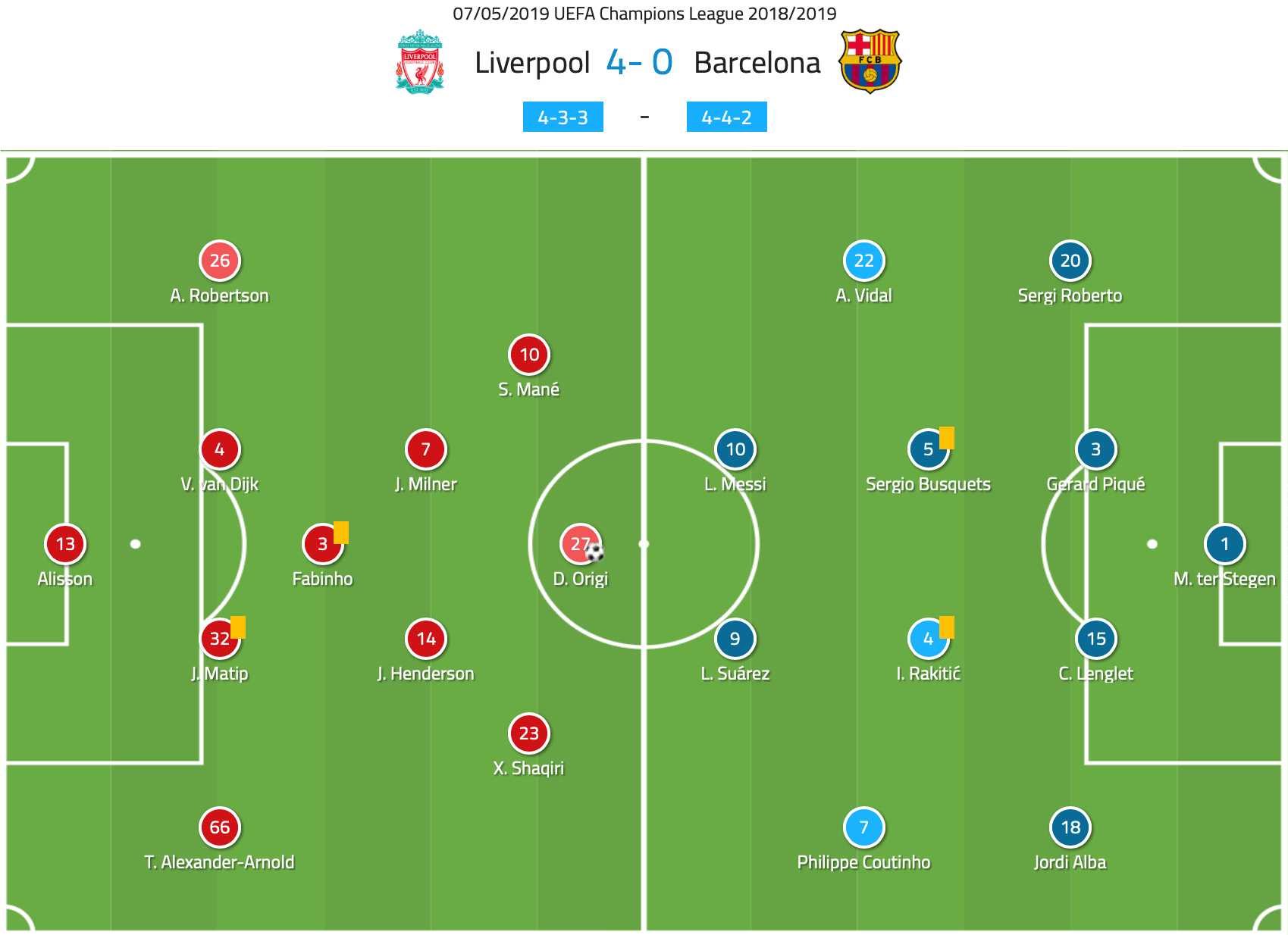
In addition to starting the match down three goals, Liverpool were also without two of their famous front three, as Mohamed Salah and Roberto Firmino were forced to sit out with injury. Xherdan Shaqiri and Divock Origi started in their place. Georginio Wijnaldum would also sub on at halftime to replace Andrew Robertson. It would be these ancillary pieces of Klopp’s squad that would make the major differences in the match, with braces coming from Origi and Wijnaldum and Shaqiri providing the assist on the tying goal.
Ernesto Valverde meanwhile was able to rest virtually all of this XI’s starters over the weekend as Barcelona had already wrapped up the La Liga title for the fourth time in the last five seasons. A fresh Lionel Messi and Luis Suárez tandem were stationed in front of two four-man lines meant to defend a considerable lead. This overall stationary setup and system would ultimately be their undoing.
Barcelona structure and attack
Barcelona organised themselves in their 4-4-2 structure as they planned to defend with stability. The compact formation is often utilised to neutralize the opponent’s build-up through the middle of the pitch.
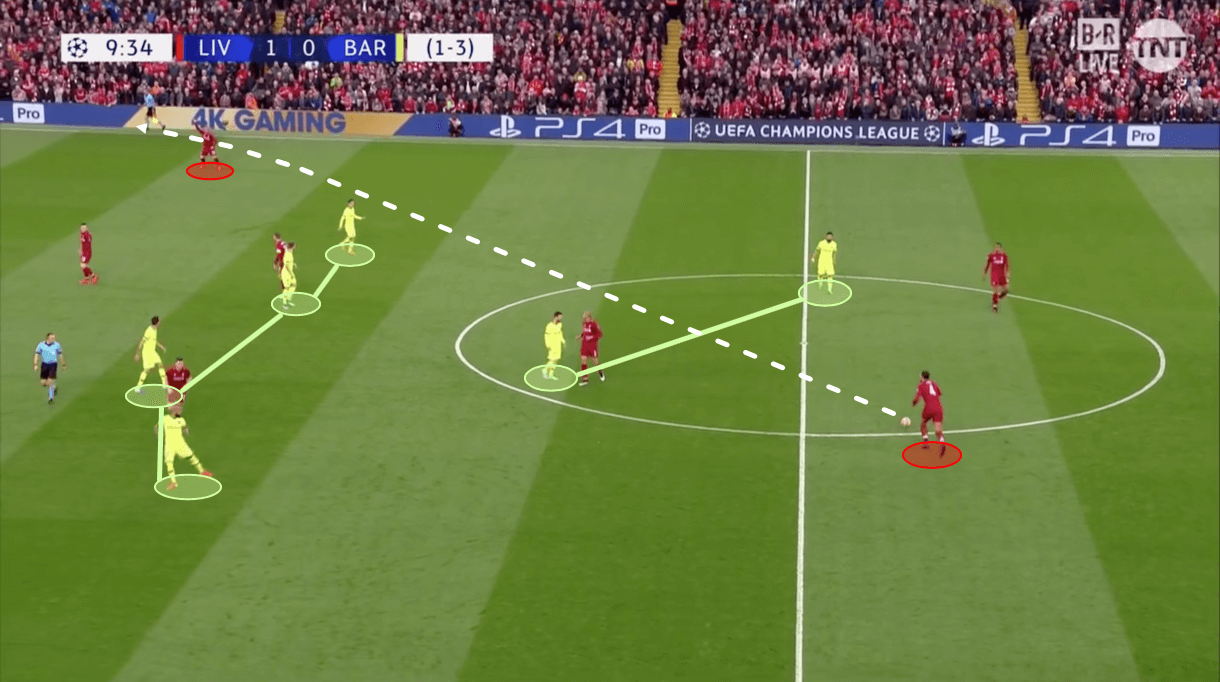
This would prove to be rather ill-advised for Barcelona, as Liverpool have thrived this season on long balls from the back line into the wide areas. Long switches of play from Trent Alexander-Arnold, Virgil van Dijk, Joël Matip, and Andy Robertson met wide attackers like Shaqiri and Sadio Mané on quick attacks, which would fluster Barcelona’s organisation.
When Barcelona were in possession, the high press of Liverpool often forced Barcelona to do the same; attempt long balls forward into the wide areas to attempt quick numerical superiority. There were moments in the match when the Spanish side successfully negated the press and progressed the ball into Liverpool’s defensive third using this method, though they were often stymied by Liverpool’s energetic defensive plays.
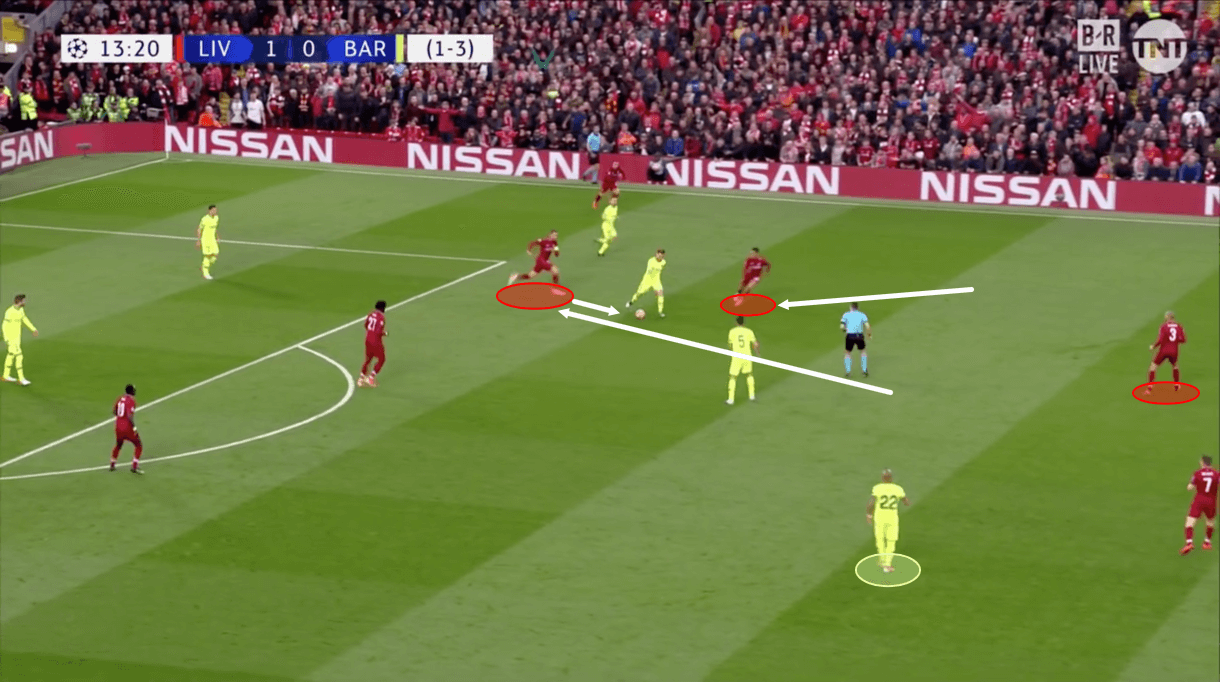
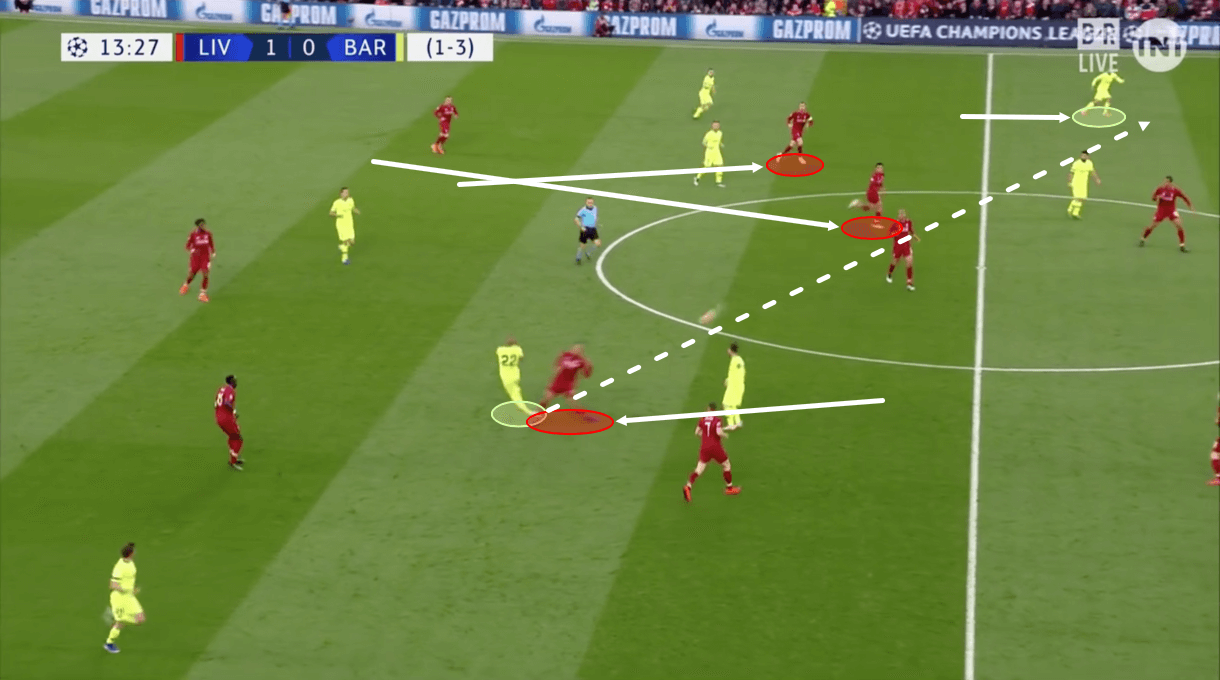
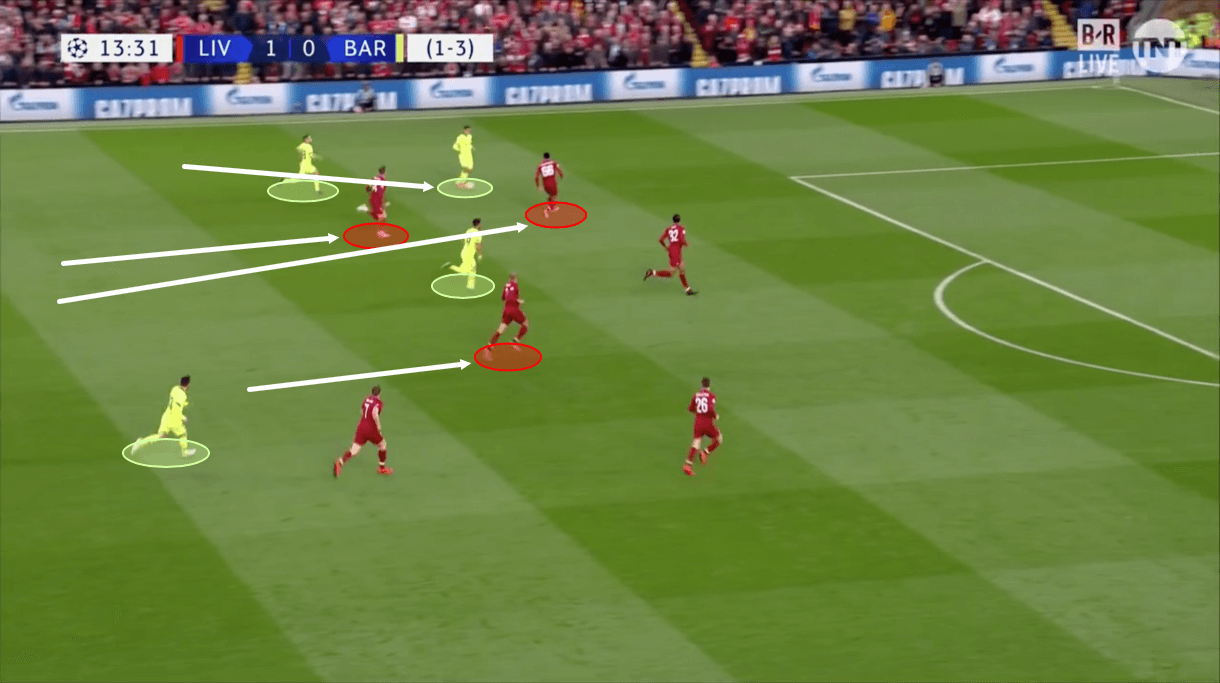
Barcelona were on occasion able to advance the ball early on through the midfield channels of Liverpool’s press, which gave their forwards space to create attacks.
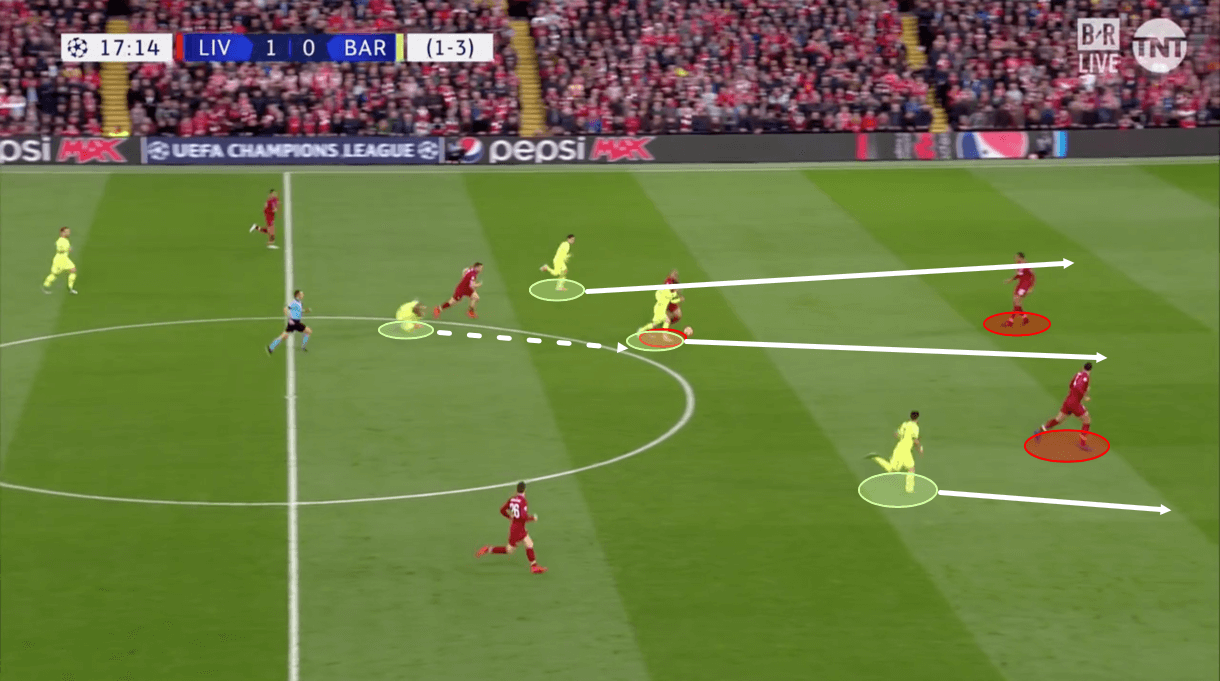
These attacks were still fruitless however thanks to strong individual defensive plays by the centre-backs and Fabinho. The defensive midfielder specifically has established himself as a technically brilliant tackler when tracking back, and that reputation only grew with this performance.
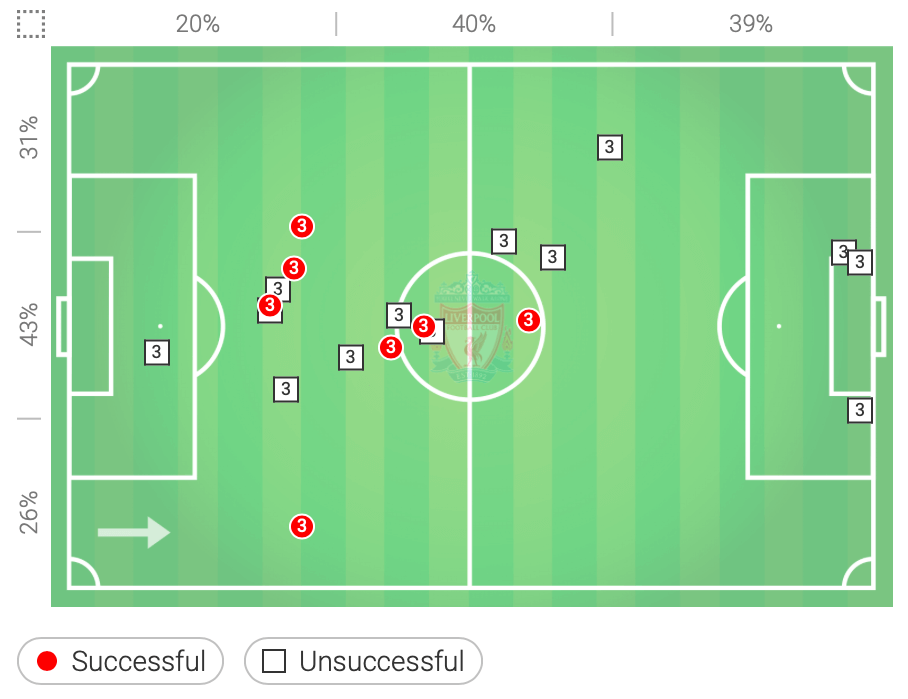
The few sequences when Barcelona were able to successfully attack the goal resulted in magnificent saves by Alisson, who made five saves throughout the match, all coming on shots inside the box. Barcelona’s attacks early were outdone by the signature defensive devices of Liverpool’s system.
Pressing and counter-pressing
Liverpool’s trademark pressing functions and anticipation were excellent throughout the match. The tempo of the press was even higher than the first leg when Liverpool at times seemed slightly more timid going forward defensively.

One of the most essential tools in a pressing system is the ability to anticipate passes or passing options. Liverpool has mastered the passing-lane press under Klopp in all areas of the pitch, and the utilization of this tactic was evident against Barcelona.
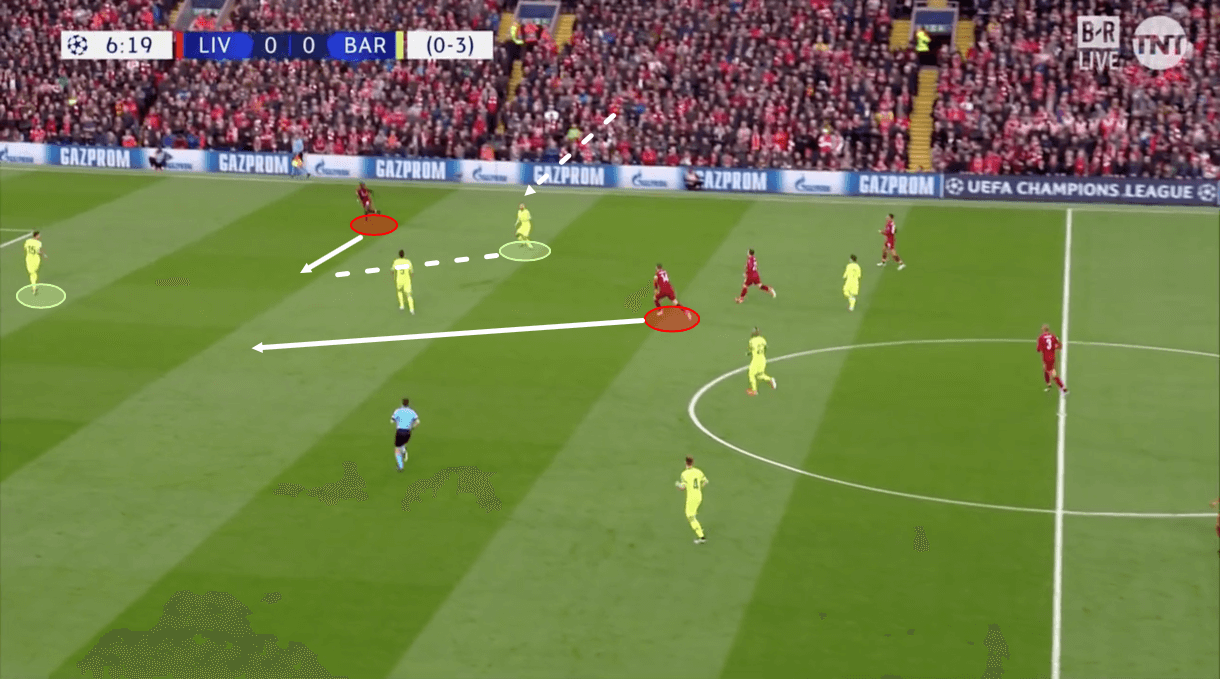
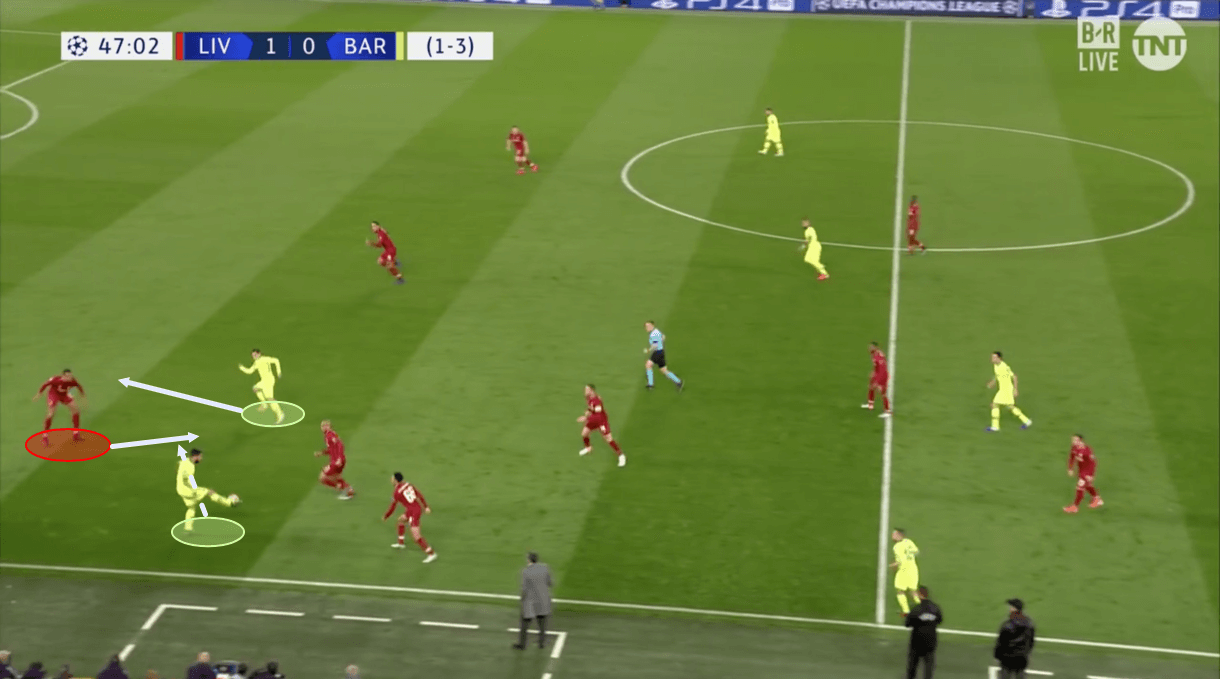
The above picture shows the first of two principles of the gegenpress or counter-press. As teams that press often give up space behind themselves to do so, stopping the counter-attack when you lose the ball is critical to successfully applying it.
This press, when grasped, can be an extremely difficult tactic to exploit, especially in the wide areas. In these cases, the touchline acts almost as another defender, limiting the space available to the opponent.
The press did not only thwart progression from Barcelona however. Liverpool are so skilled at the execution of the device that they can use it to initiate many of Liverpool’s attacks, resulting in extremely swift transitions. This is one principle of the gegenpress.
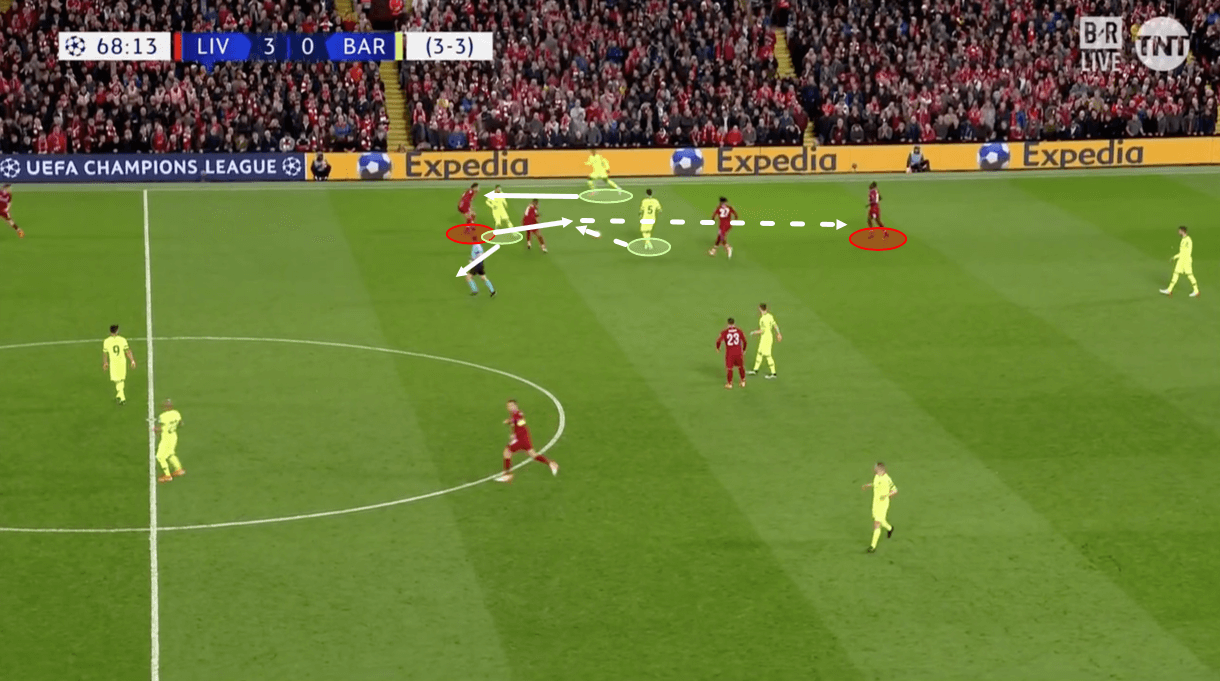
The above picture shows the second principle of the gegenpress. The prevention of the counter-attack is successful through winning the ball back and regaining possession.
Transition and attacking progression
Upon recovery of the ball, the Reds continued the theme of suffocating the opposition by overloading areas in Barcelona’s defensive third.
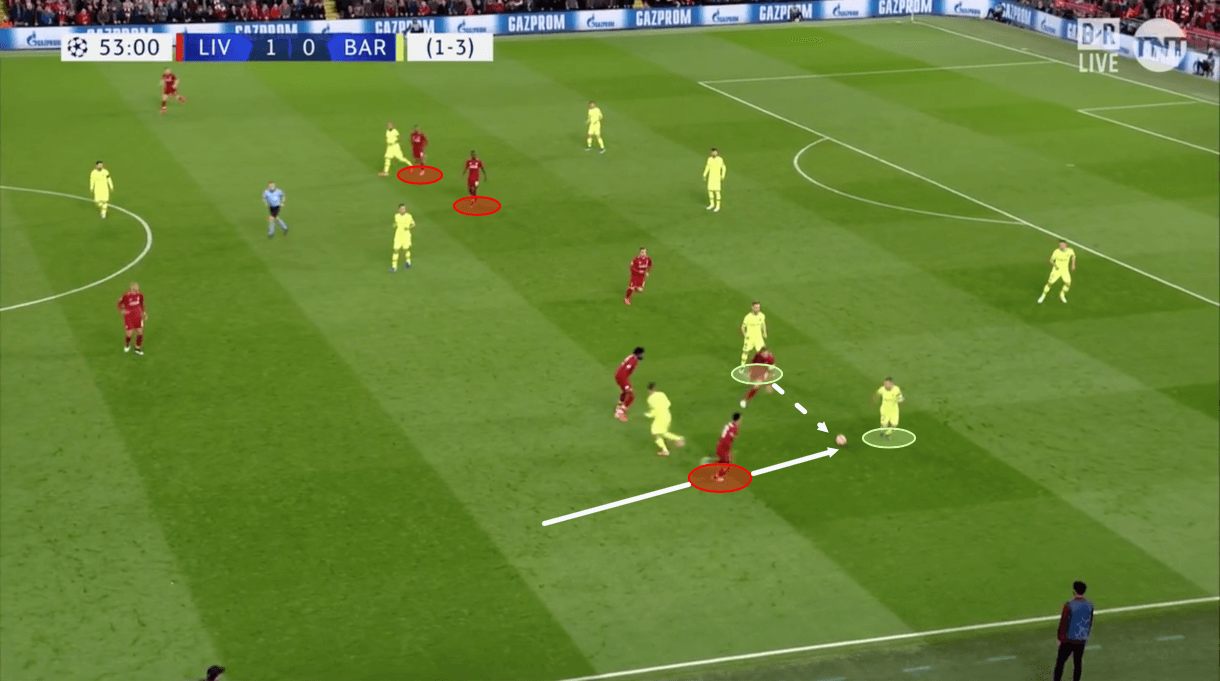
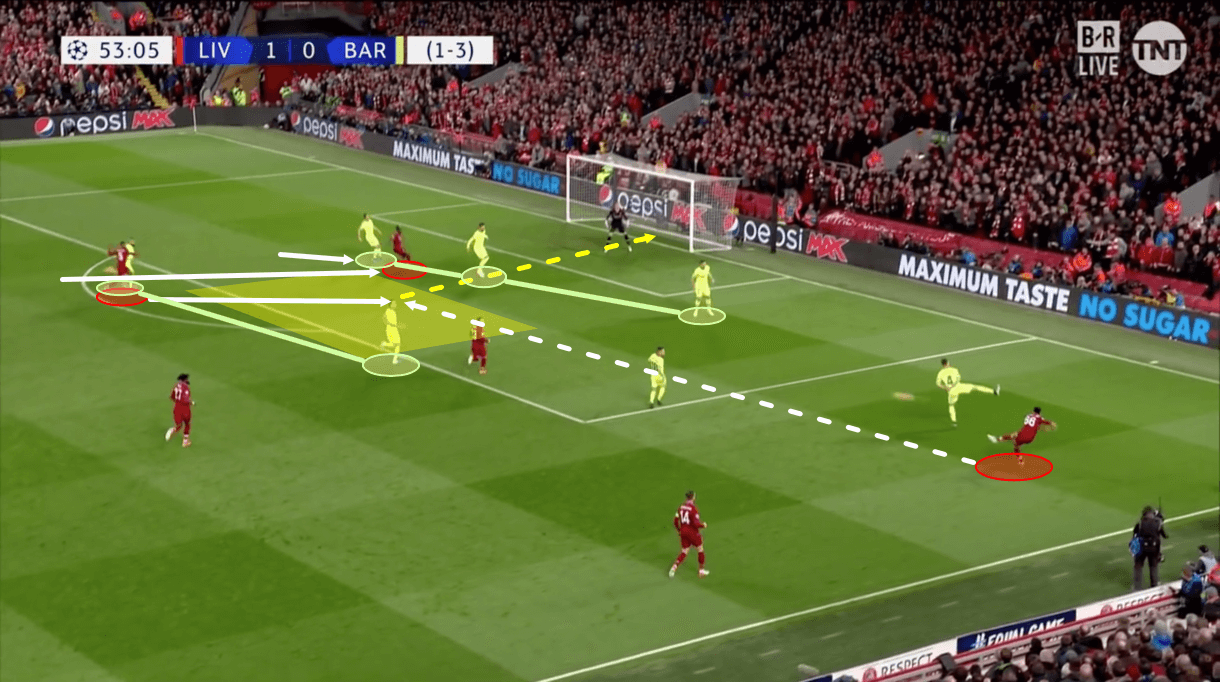
Liverpool’s chaotic fluidity caused problems for Barcelona’s calm structure. The overwhelming of the opponent’s half continued down the pitch into the final zones. Liverpool frequently pinned Barcelona back with relentless attacks involving seemingly suicidal numbers going forward.
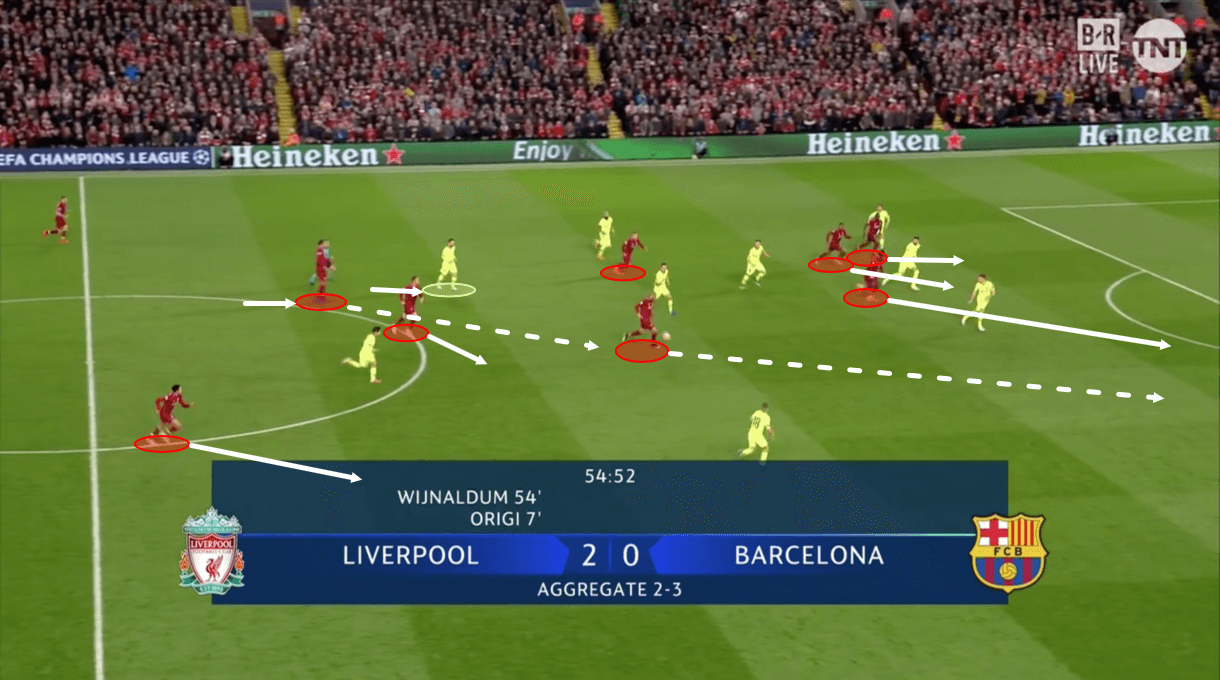
Set pieces
Liverpool have excelled this season on set pieces, leading the Premier League with 20 set-piece goals; five more than the next best club in that statistic. This success continued into this match, with the decisive final goal coming on one of the more daft set-pieces of the season.
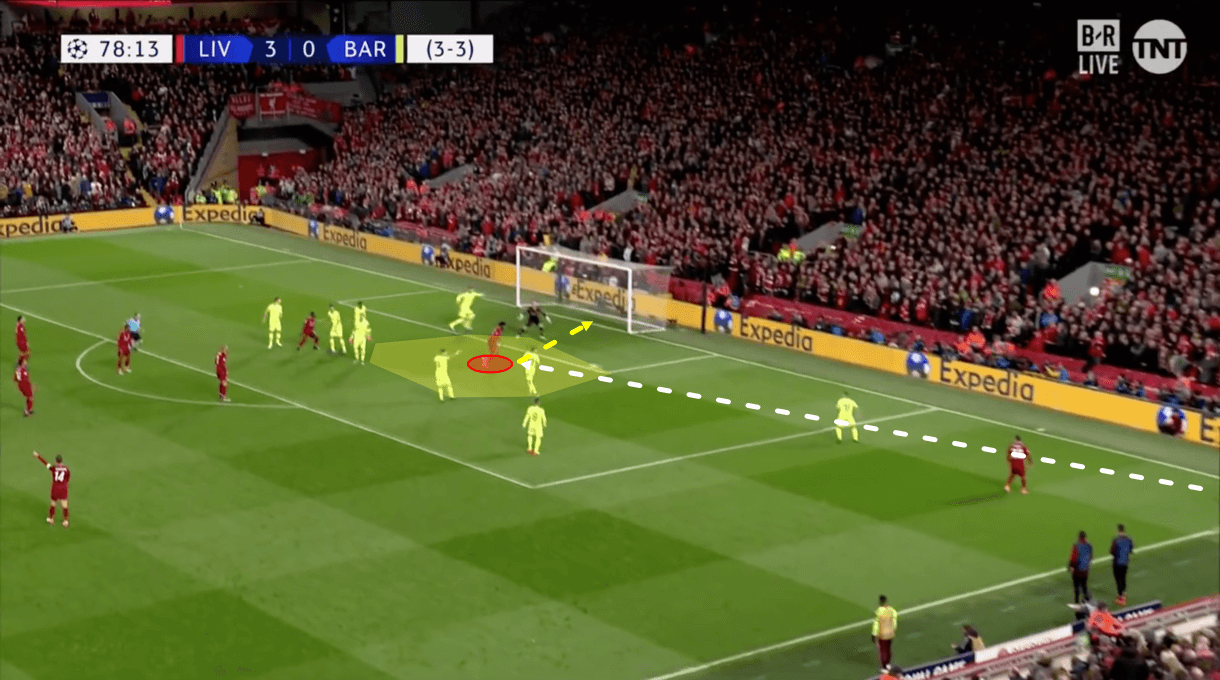
The 20-year-old defender has impressively tallied 11 assists in the Premier League this season and an additional three in the Champions League. His active defensive movement and creative playmaking in the final third were both instrumental in Liverpool’s victory.
Defending late
After scoring the tying and winning goals, one major error of Barcelona‘s was the lack of change in tactics. The players and Valverde seemed to continue to be inactive for the waning minutes of the match.
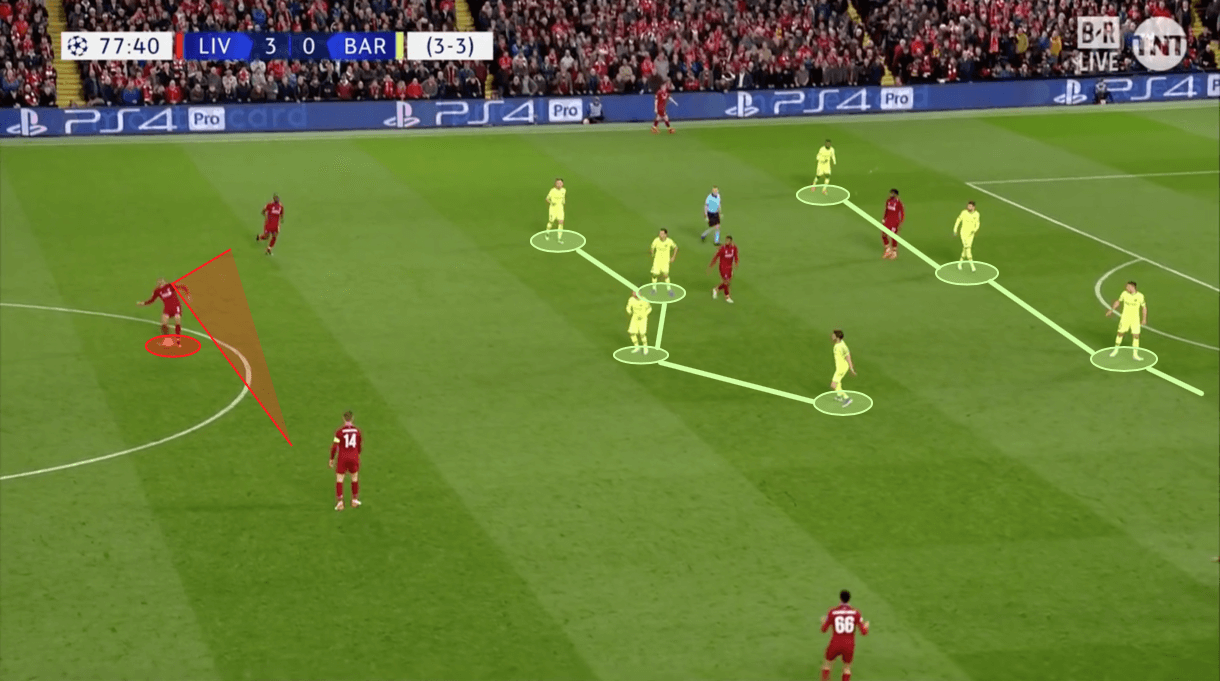
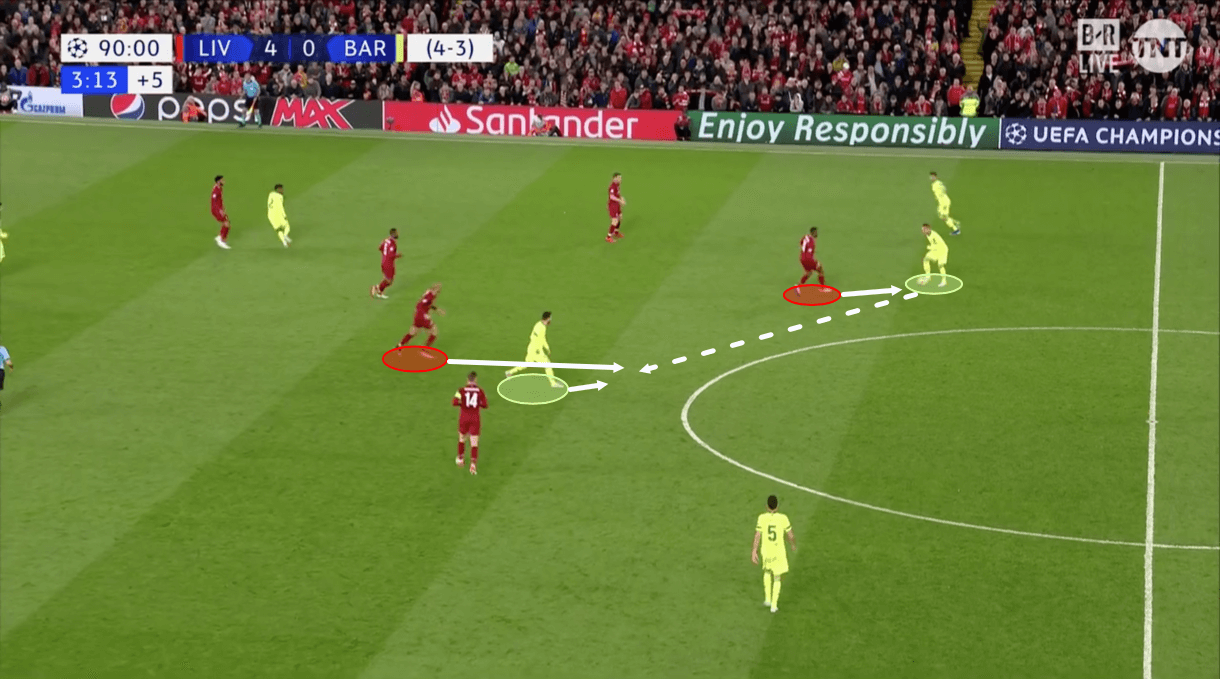
Conclusion
“Before the game, he did an amazing speech. It was something brilliant and I think he lifted us so high.” – Dejan Lovren on Jürgen Klopp
On a night that would go down in Liverpool lore as one of the most memorable, every player donning the red shirt executed the daunting task at hand with near-perfection. Barcelona possession was met with consistent pressing schemes and technical playmaking. Aggressive pressure and counter-pressing was followed by quick, forceful attacks which overwhelmed the Spanish opposition, and goal after goal was met with gasps of ‘what if?’. From a tactical perspective, the emotional and mental aspects of the game can be, misguidedly, overlooked. Klopp has built a reputation as one of the most impassioned, optimistic motivators in the game today, and he has succeeded in part by integrating these traits into the DNA of his style of play.
If you love tactical analysis, then you’ll love the digital magazines from totalfootballanalysis.com – a guaranteed 100+ pages of pure tactical analysis covering topics from the Premier League, Serie A, La Liga, Bundesliga and many, many more. Buy your copy of the April issue for just ₤4.99 here, or even better sign up for a ₤50 annual membership (12 monthly issues plus the annual review) right here.

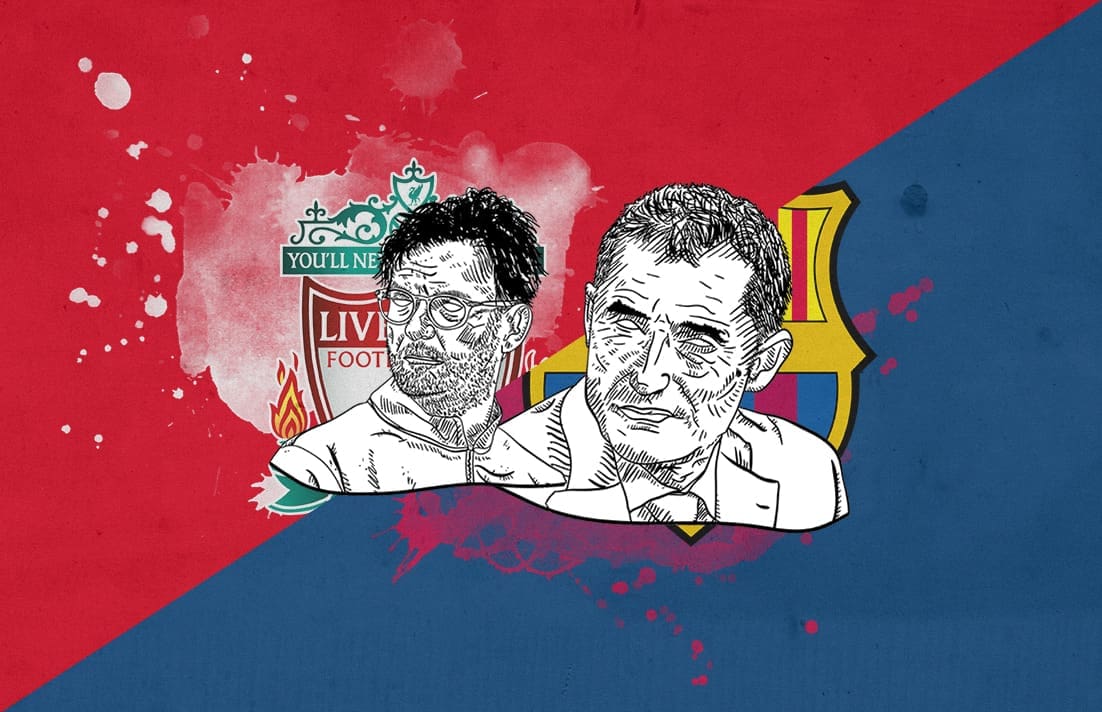



Comments